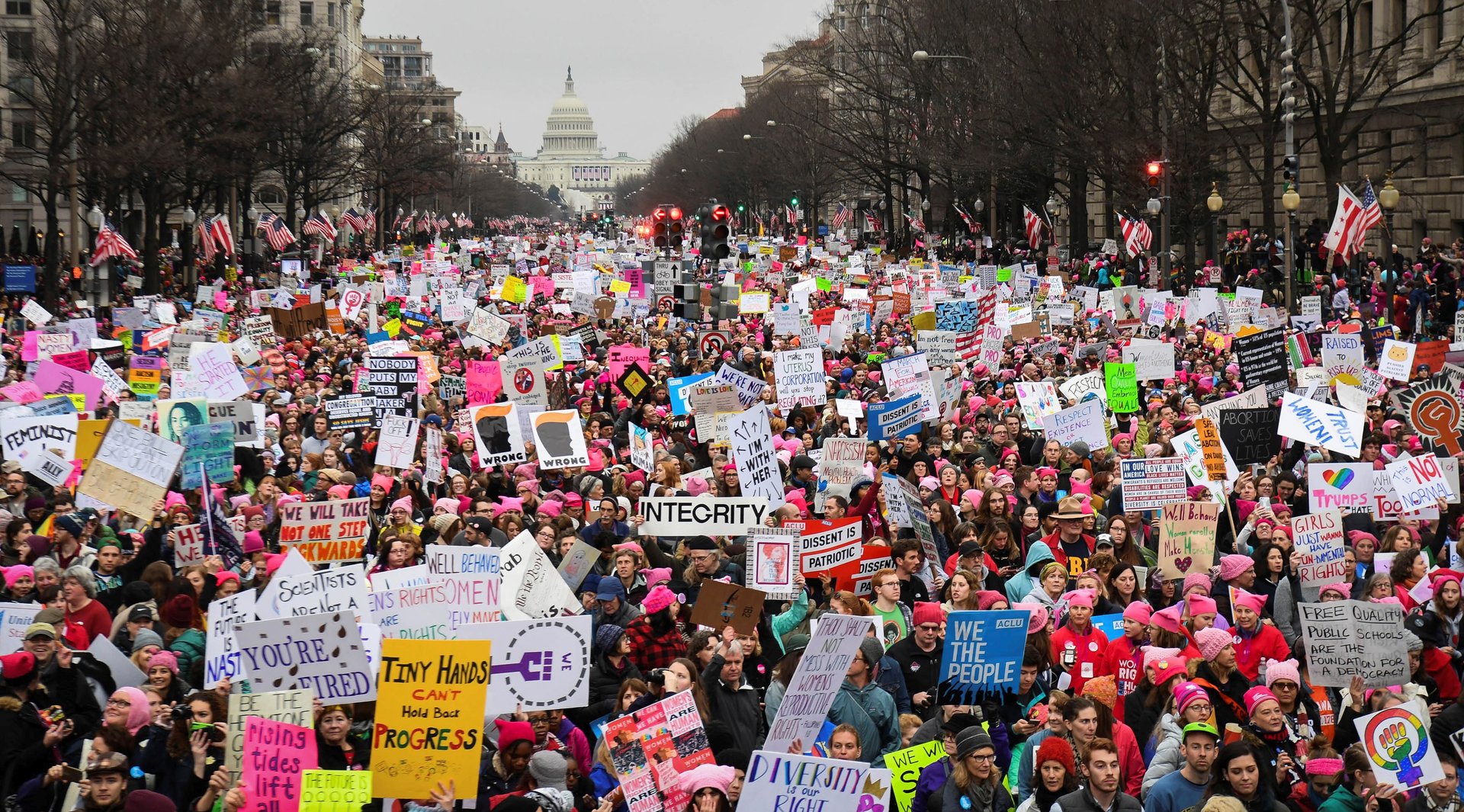One out of every 100 Americans took to the street for the Women’s March, according to estimates
On Saturday (Jan. 21), Women’s March protests flooded public spaces in hundreds of cities across the US. The size of the demonstrations, which appear to have been uniformly peaceful, was a surprise even to organizers. In Washington, DC, estimates range from 500,000 to 1 million people attended—so many that the march itself became impractical and was converted to a rally.


On Saturday (Jan. 21), Women’s March protests flooded public spaces in hundreds of cities across the US. The size of the demonstrations, which appear to have been uniformly peaceful, was a surprise even to organizers. In Washington, DC, estimates range from 500,000 to 1 million people attended—so many that the march itself became impractical and was converted to a rally.
The total number of protesters nationwide is something that will be argued over, but it seems to have been at least 3.7 million people across at least 500 different cities. Those numbers come from professors Jeremy Pressman, of the University of Connecticut, and Erica Chenoweth, of the University of Denver, who have been compiling estimates for all the marches into a single spreadsheet.
Pressman and Chenoweth offer two estimates, a low-end number and a high-end number, for each city’s march; in total, the marches drew 3.67 million on the low end and 4.6 million on the high end. We’ll never have a truly accurate headcount for the marches, though. Sources for Pressman and Chenoweth’s data range from official city estimates to eyewitness reports. They must be treated cautiously.
Nevertheless, the sheer scale of the protests is undeniable. The US Census Bureau says there are about 324 million Americans. If 3.7 million people marched, that would mean more than one out of every 100 Americans attended a protest on Jan. 21.
Even if these early estimates turn out to be wildly off-base, it would still be the largest single-day protest in American history.